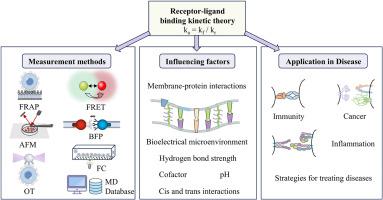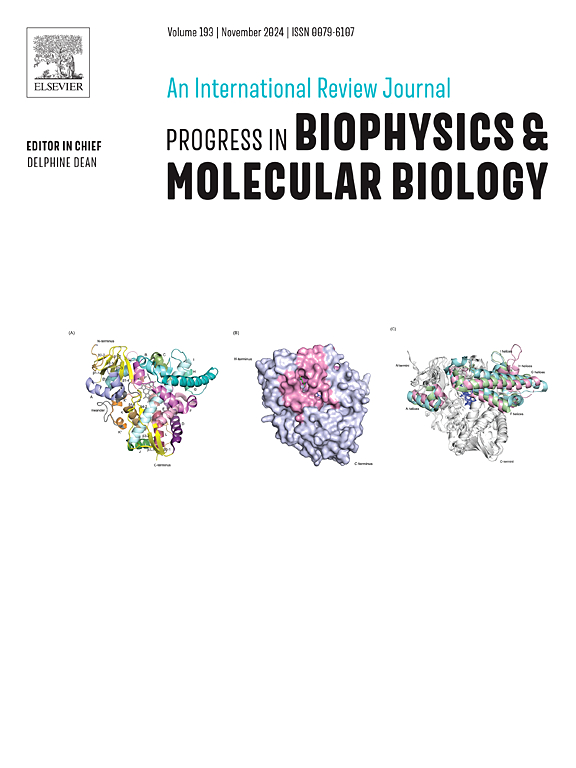Measurement methods, influencing factors and applications of intercellular receptor-ligand binding kinetics in diseases
IF 4.5
3区 生物学
Q2 BIOCHEMISTRY & MOLECULAR BIOLOGY
Progress in Biophysics & Molecular Biology
Pub Date : 2024-11-02
DOI:10.1016/j.pbiomolbio.2024.11.001
引用次数: 0
Abstract
Receptor-ligand binding on contacting cells dictates the extent of transmembrane signaling through membrane receptors during cell communication, influencing both the physiological and pathological activities of cells. This process is integral to fundamental biological mechanisms including signal transduction, cancer metastasis, immune responses, and inflammatory cascades, all of which are profoundly influenced by the cell microenvironment. This article provides an overview of the kinetic theory of receptor-ligand binding and examines methods for measuring this interaction, along with their respective advantages and disadvantages. Furthermore, it comprehensively explores the factors that impact receptor-ligand binding, encompassing protein-membrane interactions, the bioelectric microenvironment, auxiliary factors, hydrogen bond strength, pH levels, cis and trans interactions between ligands and receptors. The application of receptor-ligand binding kinetics in various diseases such as immunity, cancer, and inflammation are also discussed. Additionally, the investigation into how functional substances alter receptor-ligand binding dynamics within specific cellular microenvironments presents a promising new approach to treating related diseases.

细胞间受体-配体结合动力学在疾病中的测量方法、影响因素和应用。
接触细胞的受体-配体结合决定了细胞交流过程中通过膜受体进行跨膜信号传导的程度,从而影响细胞的生理和病理活动。这一过程是信号转导、癌症转移、免疫反应和炎症级联等基本生物机制不可或缺的组成部分,而所有这些机制都受到细胞微环境的深刻影响。本文概述了受体与配体结合的动力学理论,研究了测量这种相互作用的方法及其各自的优缺点。此外,文章还全面探讨了影响受体-配体结合的因素,包括蛋白质-膜相互作用、生物电微环境、辅助因素、氢键强度、pH 值、配体与受体之间的顺式和反式相互作用。还讨论了受体-配体结合动力学在免疫、癌症和炎症等各种疾病中的应用。此外,研究功能性物质如何改变特定细胞微环境中受体与配体的结合动力学,为治疗相关疾病提供了一种前景广阔的新方法。
本文章由计算机程序翻译,如有差异,请以英文原文为准。
求助全文
约1分钟内获得全文
求助全文
来源期刊

Progress in Biophysics & Molecular Biology
生物-生化与分子生物学
CiteScore
8.60
自引率
7.90%
发文量
85
审稿时长
85 days
期刊介绍:
Progress in Biophysics & Molecular Biology is an international review journal and covers the ground between the physical and biological sciences since its launch in 1950. It indicates to the physicist the great variety of unsolved problems awaiting attention in biology and medicine. The biologist and biochemist will find that this journal presents new and stimulating ideas and novel approaches to studying and influencing structural and functional properties of the living organism. This journal will be of particular interest to biophysicists, biologists, biochemists, cell physiologists, systems biologists, and molecular biologists.
 求助内容:
求助内容: 应助结果提醒方式:
应助结果提醒方式:


